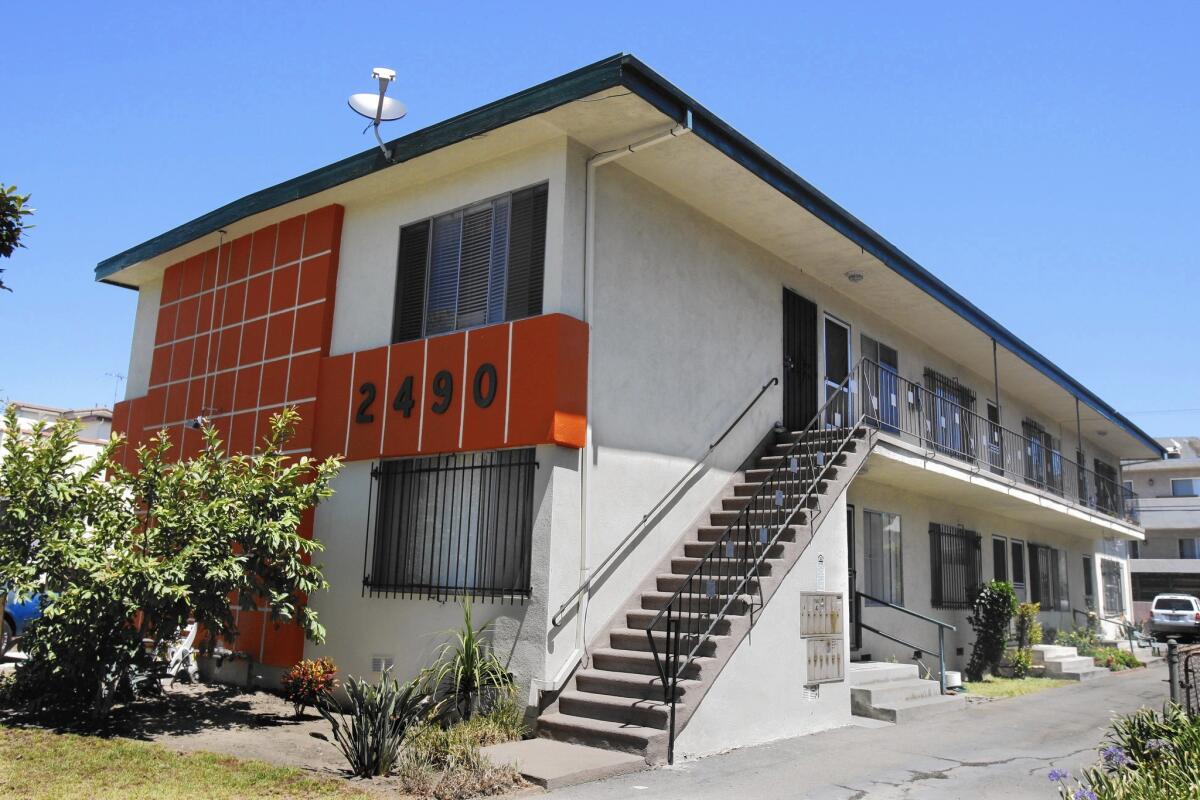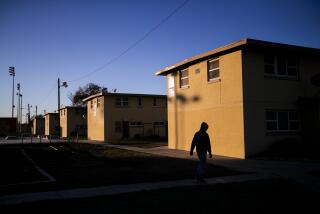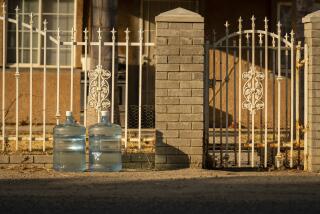There’s little incentive for L.A. renters to take shorter showers

When Emi Nakagawa rented a studio apartment in San Gabriel, she didn’t think twice before jumping into the shower.
“There was no incentive” not to, she said, because Nakagawa, like the millions of Southern Californians who rent apartments, didn’t directly pay for her water and never knew how much she used.
In the fourth year of drought, Californians are under orders to reduce their water consumption by 25%, but a new study suggests that apartment dwellers may not be doing their share.
About 86% of apartment owners in L.A. who pay for their tenants’ water have seen usage increase or stay the same since April — when Gov. Jerry Brown ordered the statewide reduction in urban water use — according to a survey by the Apartment Assn. of Greater Los Angeles.
And although officials acknowledge that the member survey wasn’t a scientific study, experts say the results raise important questions about whether apartments need water meters that can break down usage by unit.
Last month, Nakagawa, 24, moved to a Boyle Heights condo where she splits the water bill with roommates. Now, her showers are shorter and less frequent, and she makes sure to turn off the faucet when she’s brushing her teeth.
“I think I actually use less because I’m aware of how much I’m using and how much I’m spending for water,” she said. “It’s kind of bizarre that most people don’t actually know.”
State legislation aimed at requiring “submetering” in new developments is set to be heard next month by an Assembly committee. But installing new water meters in existing apartments costs thousands of dollars per unit, experts said.
“Who is going to pay for it?” said Ellen Hanak, director of the Water Policy Center of the Public Policy Institute of California. “How much [water savings] are you going to really get for the investment?”
About 62% of Los Angeles residents rent, apartment association officials say. They estimate that more than 90% of apartment buildings in the city use a “master meter,” which provides a single reading for the whole building. In the vast majority of cases, building owners foot the water costs and incorporate them into a tenant’s rent.
Tenants, meanwhile, remain in the dark about their water consumption.
“If you have no idea what you’re using, how do you become aware you need to use less?” asked Lester Snow, executive director of the California Water Foundation, an independent, nonprofit group that supports research and other projects.
The apartment association’s July survey found that about 90% of respondents owned buildings that are master-metered. Among that group, 14% of tenants increased their water usage since April, and 72% “stayed the same.” Only 12% reduced consumption.
Association officials and building owners say the cost of water is rising, and because about 78% of the city’s apartment units are subject to rent control, “building owners can’t catch up,” said Jim Clarke, executive vice president of the apartment association.
“If we truly want to attack [conservation], we need to come up with some kind of plan that allows us to submeter and allows us to pass through some of the costs to the tenant,” Clarke said, adding that he would like to split the costs about 50-50.
Earle Vaughan, who has owned apartment buildings in L.A. since 1994, said he “cringes” whenever he hears about new water restrictions because, “I have no way to control water usage in the buildings I own.”
“If I go into an apartment and see a leak, it’s ‘Oh I meant to call you.’ But I can assure you the lights are turned off,” Vaughan said, alluding to the fact that tenants are generally responsible for their own electricity costs.
Apartment complexes and condominiums account for about 28% of the city’s water use, according to the Los Angeles Department of Water and Power’s most recent data.
Julie Spacht, DWP’s water executive managing engineer, said individual building owners are responsible for any submetering. In both new developments and old buildings, the department continues to bill based on master-metered readings. Plumbing permits are handed out by the Department of Building and Safety.
Still, she said, “we believe that the more people know about how much water they use, the better decision they make, and the more likely they are to conserve.”
Spacht, Snow and other experts said they would support legislation that would require submetering in newly constructed apartments. Snow said that studies from the 1980s, when interest in conservation was ramping up, found that putting water meters on single-family homes reduced water use by 15% to 20%.
But Snow and others said that spending millions of dollars to retrofit existing buildings would probably not be justified by the relatively meager water savings.
Apartment dwellers already use less water than people in single-family homes because they do not have a yard to water or a driveway to wash their car on, experts said, and that could help explain the survey results.
“People are not reducing because they don’t have a lot to reduce,” said Stephanie Pincetl, director of the California Center for Sustainable Communities at UCLA. “Maybe you take shorter showers, but what else can you do?”
In apartment buildings, the real water savings comes from efficient appliances, Pincetl said, so it’s important that building owners take advantage of long-standing rebates for washing machines, dishwashers and shower heads.
At Brian Johnson’s downtown apartment complex, building owners recently put “water-saving features on the faucets,” he said.
To save water during the drought, the 29-year old L.A. Philharmonic musician said he hasn’t washed his car in months and has cut five minutes off his shower.
But Johnson doesn’t pay for the water he does use, so “the only incentive I have is … my own moral code,” he said. “I could leave the faucet on all day if I wanted. There is no bill that would stop me.”
Twitter: @ByMattStevens
More to Read
Sign up for Essential California
The most important California stories and recommendations in your inbox every morning.
You may occasionally receive promotional content from the Los Angeles Times.











